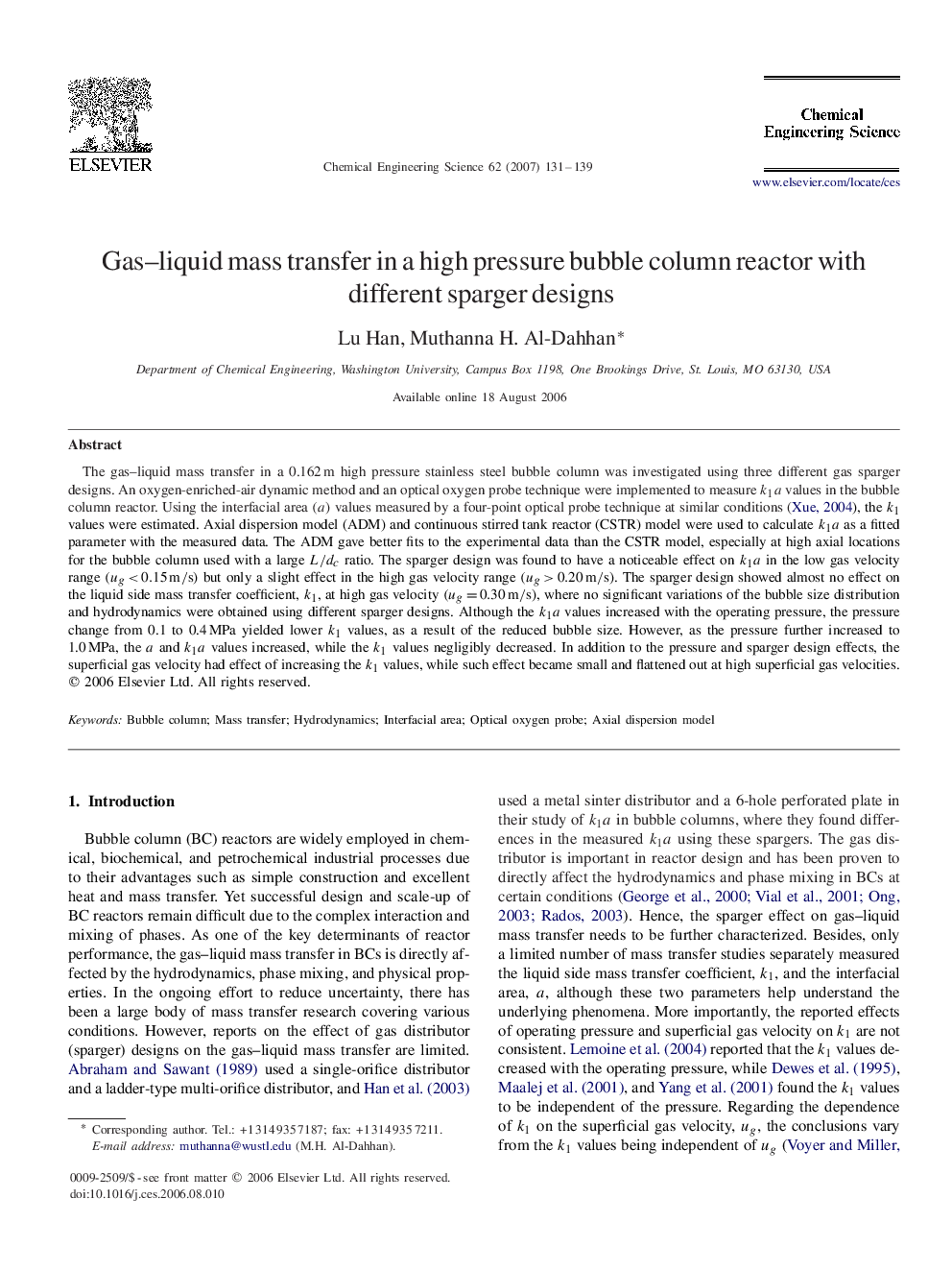| Article ID | Journal | Published Year | Pages | File Type |
|---|---|---|---|---|
| 160349 | Chemical Engineering Science | 2007 | 9 Pages |
The gas–liquid mass transfer in a 0.162 m high pressure stainless steel bubble column was investigated using three different gas sparger designs. An oxygen-enriched-air dynamic method and an optical oxygen probe technique were implemented to measure k1ak1a values in the bubble column reactor. Using the interfacial area (a)(a) values measured by a four-point optical probe technique at similar conditions (Xue, 2004), the k1k1 values were estimated. Axial dispersion model (ADM) and continuous stirred tank reactor (CSTR) model were used to calculate k1ak1a as a fitted parameter with the measured data. The ADM gave better fits to the experimental data than the CSTR model, especially at high axial locations for the bubble column used with a large L/dcL/dc ratio. The sparger design was found to have a noticeable effect on k1ak1a in the low gas velocity range (ug<0.15m/s) but only a slight effect in the high gas velocity range (ug>0.20m/s). The sparger design showed almost no effect on the liquid side mass transfer coefficient, k1k1, at high gas velocity (ug=0.30m/s), where no significant variations of the bubble size distribution and hydrodynamics were obtained using different sparger designs. Although the k1ak1a values increased with the operating pressure, the pressure change from 0.1 to 0.4 MPa yielded lower k1k1 values, as a result of the reduced bubble size. However, as the pressure further increased to 1.0 MPa, the aa and k1ak1a values increased, while the k1k1 values negligibly decreased. In addition to the pressure and sparger design effects, the superficial gas velocity had effect of increasing the k1k1 values, while such effect became small and flattened out at high superficial gas velocities.
